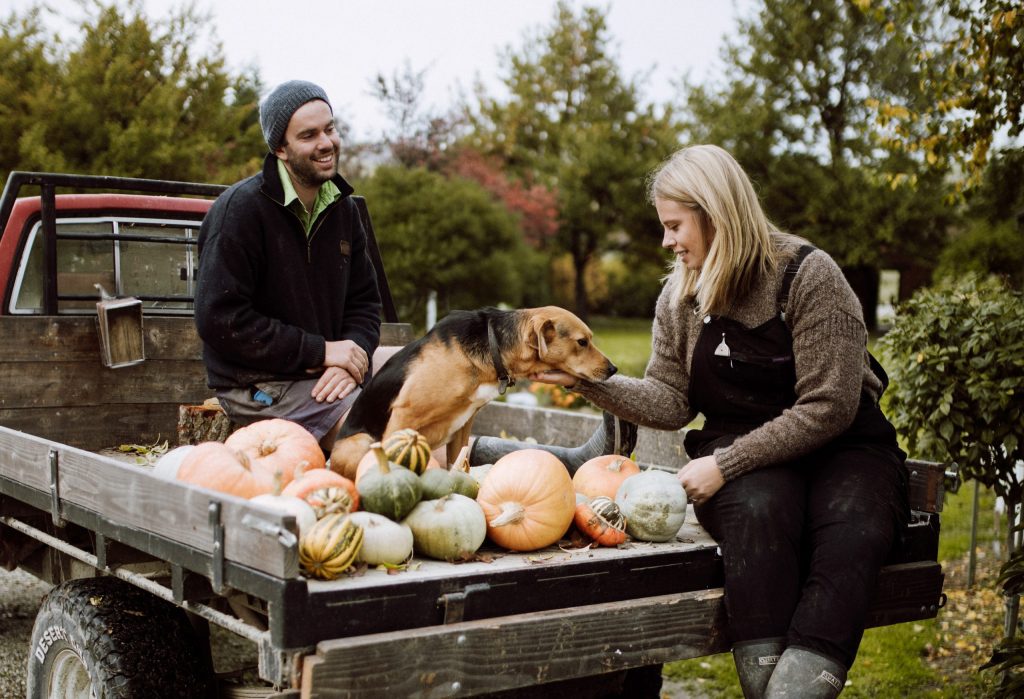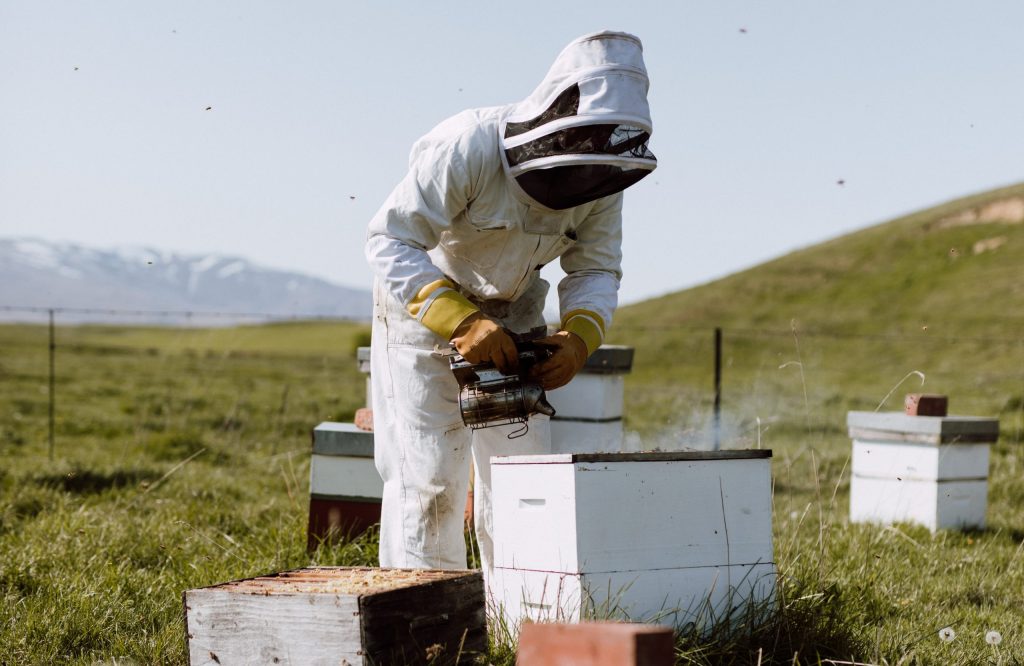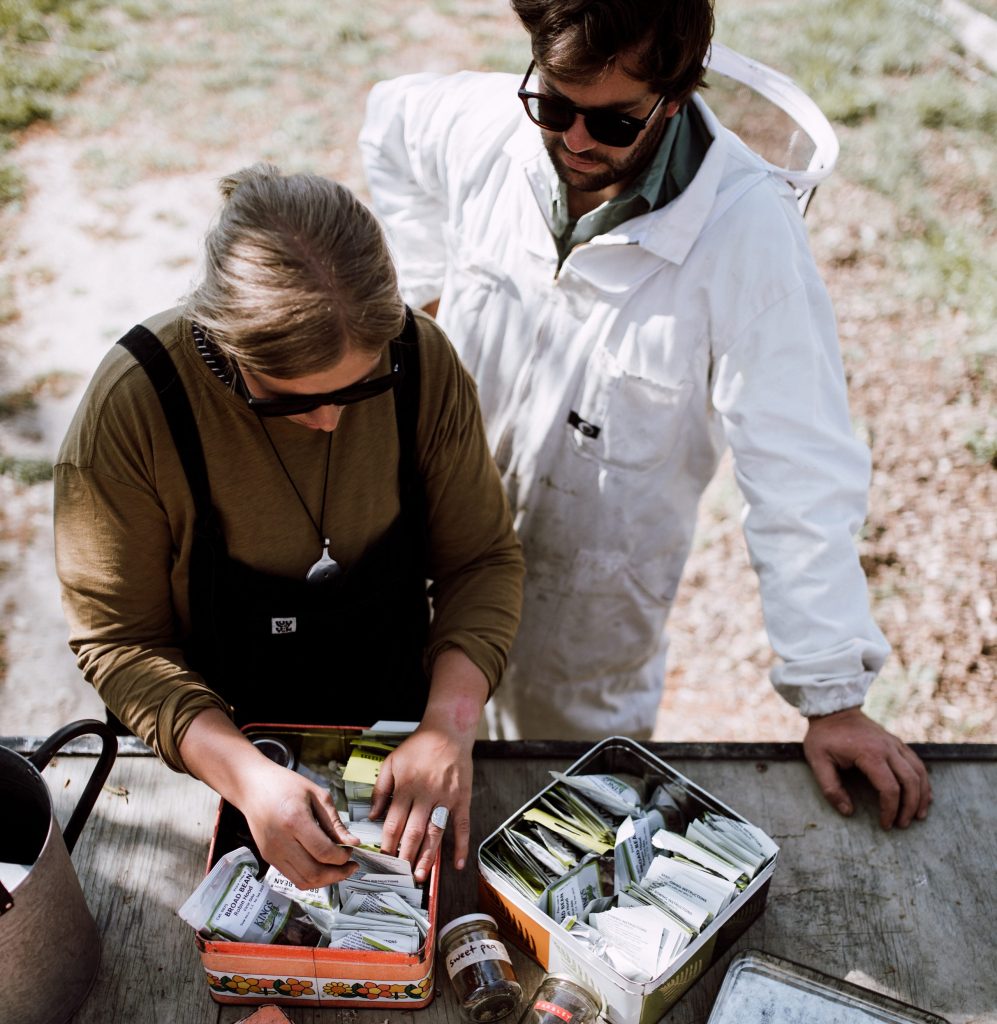A Homesteading Haven
Born and bred in Edinburgh, Scotland, Gillian Swinton came to New Zealand on an adventure – and never left. Turning a corner of Central Otago into a homesteading haven where the simple life has become very much the good life, she offers us an insight into where it all began. Words Gillian Swinton, Photos Francine Boer.

My mother is from a little island in the Outer Hebrides in northern Scotland, and our school holidays were spent at the family farm on the Isle of Benbecula with my grandparents. My grandmother Kate will forever be my inspiration – she had a pantry with three chest freezers filled with home-grown beef and lamb from the farm, supplemented with stores of locally caught seafood. The hub of her kitchen was that cream-coloured Rayburn range, fuelled with the peat we’d all spend days digging and stacking during summer holidays while battling armies of midges. The stove was always on, and the kettle was ready for a cup of tea at a moment’s notice.

With the introduction of more small convenience supermarkets and regular deliveries, it has become a lot easier to live on these remote islands. However, back when my grandmother was raising a family and supporting the farm, being resourceful, being self-sufficient and relying on the community wasn’t called ‘homesteading’. It was simply how they survived.
When I first arrived in New Zealand in 2010, I spent a good chunk of my twenties working up at the Coronet Peak ski field in Queenstown. Some pivotal adult friendships were forged up that mountain, and it was there that I met a Southland farmer called Hamish, and our adventure began.
After heading offshore together for several years, we came back to New Zealand and headed to Hamish’s old stomping ground ‘temporarily’ living in Winton for four years. It was here, in a kitchen where I could touch both sides if I held out my arms, that I learned how to preserve food just as my mother and grandmother had done before me.
In Winton, Hamish found a job as a beekeeper, and I was working as a large-animal veterinary technician and a casual relief milker. Our weekends were often spent on Hamish’s family farm in the Hokonui Hills, and this is where we sowed our potato and garlic crops. We’d spend time there collecting and splitting firewood, tending to Hamish’s hives or butchering a cattle beast to share amongst family. Hamish would often help his brother on the farm, and I would pore over the recipe books in the farmhouse kitchen, absorbing recipes and cooking methods from the books his mother had accumulated.
Without realising, we were ‘homesteading’ in our rental property. The time spent in that tiny kitchen – learning (and failing at) different preserving methods, utilising materials and upskilling – has been fundamental to our life now. It’s just that we now have the space to do more, and we have more freedom in our decision-making.
In January 2021, we bought Lauderburn House, a 2.7-hectare section situated on the Otago Rail Trail.
At the time of purchase, the old 1920s doctor’s house was being operated as a bed and breakfast, so we tentatively took on the existing bookings as a venture to generate some extra income, which is always handy on a lifestyle block!
I now work from home freelancing as a digital marketer, which is flexible enough for me to look after the B & B bookings simultaneously.
We currently have a flock of 20 or so Wiltshire sheep, a breed chosen because they are self-shedding, which means we don’t have to shear them, and a flock of Brown Shaver chickens, which fluctuates in number. Hamish has a few beehives out the back, enough to keep him busy and our roadside stall stocked with honey. As for our gardens, we have a paddock dedicated to growing big crops of strawberries, garlic and sunflowers, as well as another 200 square metres for growing everything else.
While the farm looks picturesque, it’s far from an ideal section. We did a lot of work in the beginning to fix its infrastructure and streamline its flow, repairing fencing, removing dead trees, earthworks to flatten areas and fill in holes … The farm’s soils are very heavy with clay and we get debilitating temperature extremes: droughts in summer and bone-chilling −10°C hoar frosts in winter. Even though Central Otago summers can be blisteringly hot, we are known to get humbling frosts in spring and summer as well, making the short growing season a little tricky.
We have a list as long as our arm of things we would like to add to the property – but good things take time. Slowly but surely we will get there, and learning to improvise in the meantime is all part of the experience.
Homesteading
The main principles of homesteading, as they apply to Hamish and me, are simple.
Food
Growing, eating and preserving as much of our own food as we can. Discovering new ways to do so, and developing ways which work for us and our space. Eating seasonally, preserving or bartering our excess food and buying from local producers when we need to.
Land
Enhancing the land: a never-ending project of improving soil quality, planting trees, planting natives, composting our waste, utilising our worm farm and multi-species grazing. Leaning into the environmental challenges of our climate, and not trying to fight Mother Nature.
Community
Less reliance on big corporations and leaning into community: swapping or bartering produce and skills with neighbours, sharing appliances and knowledge, working together on big projects.
This is an edited extract from The Good Life by Gillian Swinton, photography by Francine Boer Photography and Gillian Swinton. Published by Allen & Unwin NZ, RRP $39.99.


